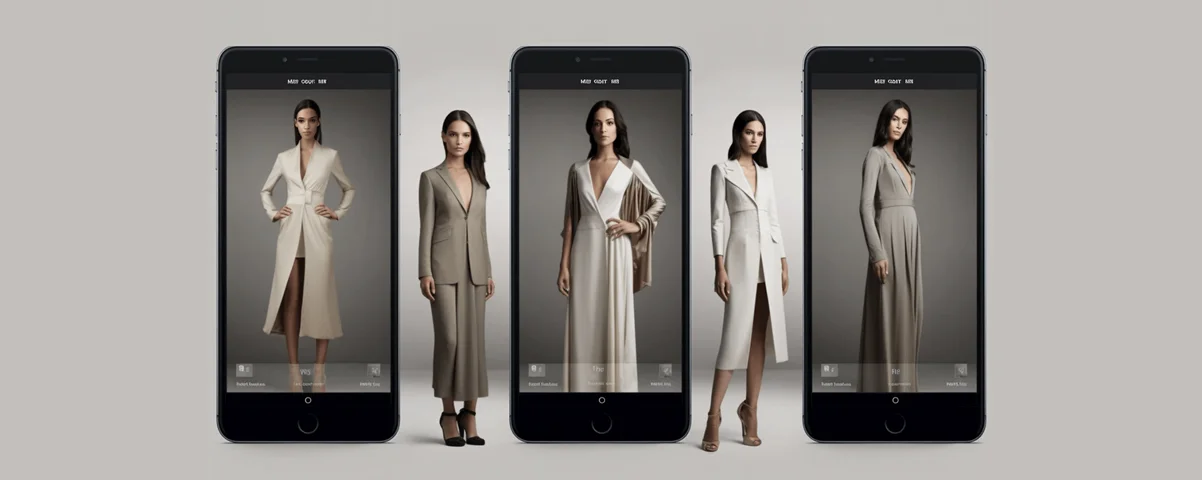The evolution of the showroom – how technology is transforming B2B sales
Introduction
You may have noticed that over the past decade or so, the way brands reach consumers and sell products has changed beyond recognition. With the advent of social media and direct-to-consumer shopping, online purchasing is more powerful than ever.
And the way we buy has changed too – we’re no longer restricted to a physical store down the road, we shop from everywhere in the world through our phones, tablets and laptops.
However, this revolution is yet to hit the business side of fashion. It is yet to change the way brands and manufacturers conduct buying and selling with each other.
Fashion brands, vendors and suppliers still need to conduct physical meetings in their showrooms to show and sell their products. And getting new clients is largely dependent on trade shows. This model may not be the most functional as physical showroom visits have reduced and trade show attendance is dwindling.
What’s worse, the pandemic has confirmed that this format is outdated. So, even though fashion fairs and runway shows are returning… Many brands, manufacturers and suppliers have decided that the hassle just may not be worth it anymore!
Fortunately, the solution is already here. It’s called a Virtual Showroom
It’s time to acquaint yourself with its replacement and how everyone from brands to manufacturers are taking advantage of the new technology.
What is a Virtual Showroom?
While online shopping is more convenient and affordable than a physical shop, it’s only a fraction of what can be achieved with a Virtual Showroom. Sometimes also called digital showroom, it’s a platform that allows a brand or supplier to sell and engage with customers in the digital realm.
As a concept, virtual showroom has been around for a while, but we’re now starting to see it gain momentum and drive incremental revenue. They’re also vastly improving the customer experience.
Replacing the physical showroom or trade show exhibits, a Virtual Showroom takes the best parts of the showroom experience and organizes them into a user-friendly digital interface. It brings businesses unprecedented opportunities to strike deals and initiate transactions without leaving their desks.
A virtual showroom can be as complex and innovative or as minimal and functional as the brand itself. It can be an extension of a brand’s universe and a medium to communicate its story to prospective customers.
To start off, let’s look at the crème de la crème of virtual showrooms. This shows how some of the most innovative ways brands are harnessing the full potential of virtual showrooms to connect with shoppers.
If you’ve heard of the “Metaverse”, you’d know that this is the biggest new playground for fashion enthusiasts. The Metaverse is where you get to experience the Internet as virtual reality, like a scene out of Steven Spielberg’s Ready Player One.
If 2021 was any indication, no fashion brand wants to be left behind as the world moves towards a new digital era. Brands like Nike, Louboutin, Balmain, Diesel and more are creating virtual showrooms in the form of immersive 3D virtual environments.
Taking inspiration and often collaborating with gaming or virtual reality platforms like Roblox, brands have created virtual spaces that look exactly like physical showrooms. Shoppers can browse through clothes and try them on via state-of-the-art “try-on” technologies. Avatars can sport digital renditions of their collection and customers can buy both digital and physical looks in the Metaverse.
US-based designer JW Anderson choose a simpler form of a digital showroom in collaboration with the HoloMe app. Models were recorded in front of a green screen wearing the brand’s Spring/Summer ‘21 collection. And when you open the HoloMe app, you can turn the camera on and project the model in front of you like a video call.
Why Virtual Showrooms are a powerful tool for fashion brands
Every brand must find a way to make an impression. But many forget that clothing is a multi-sensory experience. It’s not easy to express your brand personality through pixels and text. As a result, most brands run into problems with their online shops — like poor or no conversion rates and no sales.
At the risk of contradicting ourselves, we’ll say that the showroom is not dead – but it has moved online.
With digital showroom, you don’t just fulfill the primary purpose of selling online but it allows online shoppers to explore every aspect of your brand’s personality by including aspects like imagery, product descriptions, and music/sound effects.
You can do all of this without spending a bomb on real estate, set design, props, sales assistants you and other resources associated with a physical store.
The Virtual Showroom is open 24/7 so you can cater to buyers from all over the world. They can visit your store at any time and get the same experience as someone sitting on the other end of the world.
Even if you already have online retail presence, a virtual showroom offers the chance to build brand awareness and improve conversions. The novelty of experiencing a virtual showroom can leave a lasting impression on your customer with little effort on your part.
Features such as chatbots, videos, look books, interesting backgrounds and 360-degree 3D product views create an interactive environment for buyers.
Last but definitely not the least, a virtual showing is a far more sustainable shopping format for both your brand and your consumer.
Why fashion manufacturers and brands should utilize virtual showrooms to grow B2B sales
For fashion manufacturers and brands, detailed in-person meetings to review presentations, catalogues, textiles, trims and so on are common practice. Both the brand and supplier go over every minute detail of the collection over and over again to ensure it is what they want to buy and it’s produced to perfection. Since no sample is perfect, the process is known to drag out for long periods!
As the global situation pushed these meetings online, it became even more challenging for manufacturers. Such limitations make it harder for suppliers to pitch their in-house design collections. Brands are also finding it harder to sell their collections to retailers. A business model that brings them massive growth and profit. With many retail buyers and brand owners unable to travel, suppliers are losing important business.
The lack of proper infrastructure makes these meetings tedious to the point of being unproductive. This is where virtual showrooms can become a saving grace for manufacturers.
A Mckinsey & Co. report said “both buyers and sellers prefer the new digital reality. Around 70-80% of B2B decision-makers prefer remote human interaction or digital self-service.”
Virtual Showrooms are the ‘new normal’ for fashion manufacturers
The benefits of digital showrooms are aplenty. So, why should B2C have all the fun!
Virtual Showrooms for manufacturers can enable greater collaboration and ease communication between vendors and brands. It gives them a shared platform to review and discuss design and sample related queries in a centralized way.
With most global trade shows and garment fairs still on hiatus, digital showrooms can fill a glaring demand gap in the B2B fashion industry. Fashion manufacturers can use them to host their own trade show. They can invite their existing and prospective customers to view collections and streamline the B2B sales process.
Vendors can save time and eliminate the hassle of physically managing a large number of customers, as opposed to just sharing a link. Brands can benefit from exclusive viewings in their own time and place orders on the platform itself. Unlike a physical showroom, a virtual showroom allows you to invite multiple clients who may not have been able to visit your physical setup otherwise.
What’s more, a digital showroom gives you access to analytics such as how long a person spent on a collection, which products did they engage with the most and so on. This data will guide you in making better decisions about the design, development and sale of your products.
Digitalization of B2B commerce is essential for a more sustainable and efficient future of fashion.
Manufacturers should embrace virtual selling before another calamity eats away at their business goals. A virtual showroom can be THE solution to future-proofing your factory. Digitalize and centralize your fashion business before it’s too late!
Wondering what the WFX Virtual showroom can do for you?
Learn more about how the WFX Virtual Showroom can boost your sales processes and ensure the continued growth of your business.






